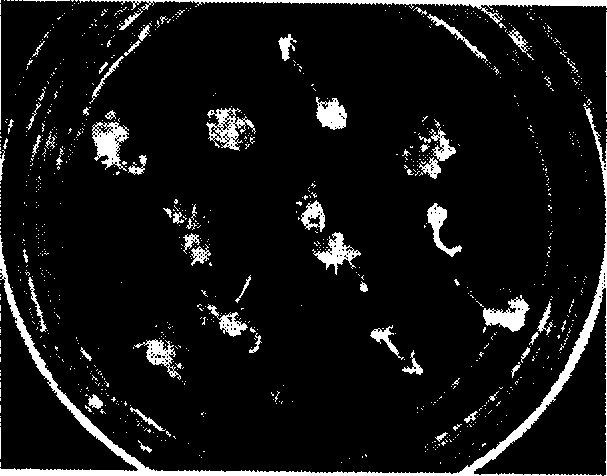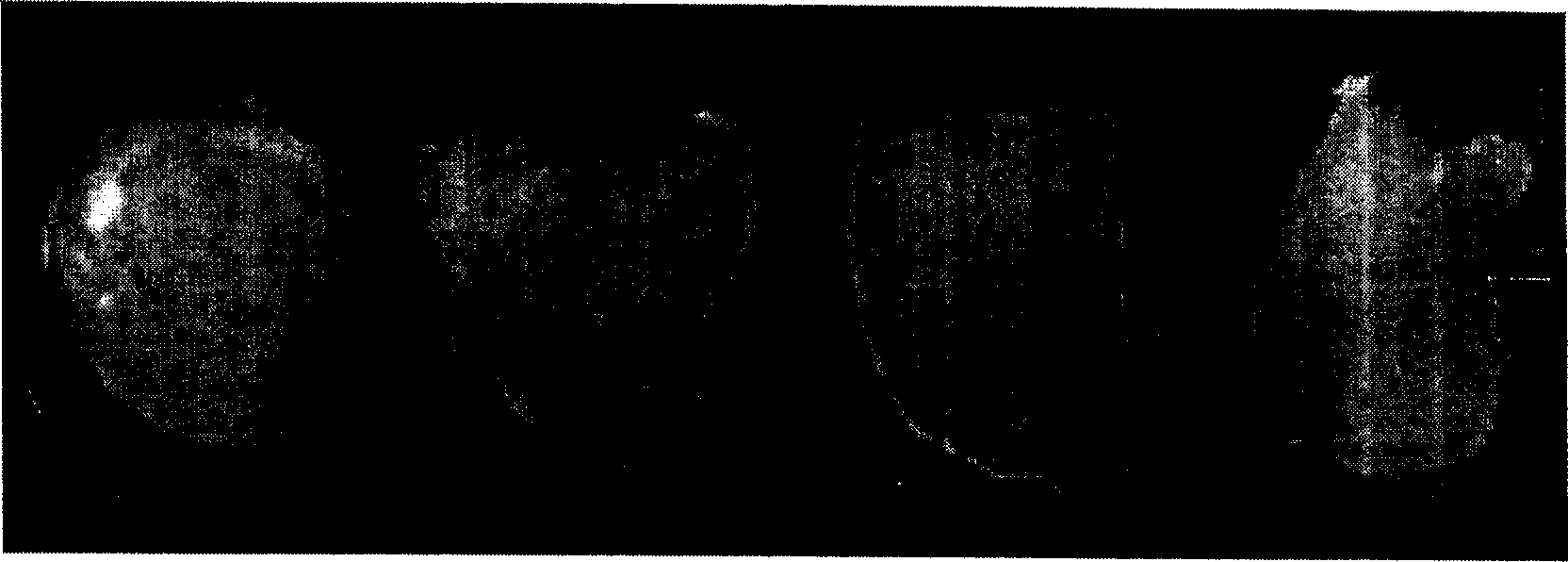Plant regeneration method of humid euphoriba somatic embryogenesis path and culture medium for said method
A culture medium and Dijin technology, applied in the field of plant tissue and cell culture, can solve the problems of difficult long-term subculture and differentiation ability of callus, low reproduction efficiency, and difficulty in realizing factory production, etc., and achieve callus induction rate and somatic embryo differentiation rate, and the effect of good proliferation effect
- Summary
- Abstract
- Description
- Claims
- Application Information
AI Technical Summary
Problems solved by technology
Method used
Image
Examples
Embodiment 1
[0040] Test material selection, culture medium design and inoculation culture
[0041]1. Sources of test materials and their processing:
[0042] The test material of the present invention is selected from the bud and stem section of Dijindai, collected from the flower test base of Huazhong Agricultural University, Wuhan City, Hubei Province, and each Dijina is a genotype. The six plants collected by the applicant were numbered as PTC, PT1, PT2, PT3, PT4, and PT5, respectively. The stem sections of Dijina chinensis collected in the field were sterilized by conventional methods (refer to: compiled by Li Mingjun, Plant Tissue Culture, China Agricultural Press, 1992 edition), and the sterilized Dijina chinensis stem sections were inoculated on MS basic medium + 6-BA 1.0 mg Axillary buds were induced to germinate on / L medium to obtain sterile seedlings. After the sterile seedlings were obtained, they were inoculated on MS basic medium+6-BA1.5mg / L+IAA0.01mg / L medium for prolifera...
Embodiment 2
[0059] Effects of Different Concentrations of 2,4-D on Induction of Petiole Callus of Digum chinensis
[0060] In plant tissue culture, 2,4-D is a widely used auxin growth regulator, which is recognized as one of the most effective auxins to initiate cell dedifferentiation and form callus or organogenesis .
[0061] After cultivating the petiole of Dijina for about 1 week, a small amount of white callus can be seen at the swollen incision. About 1 month, two types of callus can be observed, one is white and translucent, more compact, with glossy with few adventitious roots (see figure 1 A), most of the callus can produce somatic embryos in subsequent passages. The other is white, loose and vigorous growth or water-soaked or browned. The state of this callus is difficult to adjust, and somatic embryos cannot be produced during differentiation. In the method of the present invention, the petioles of the six genotypes tested can produce callus on the medium of four different c...
Embodiment 3
[0065] Effects of Different Concentrations of BA and NAA on Induction of Somatic Embryos from Petiole Callus of Dijina chinensis
[0066] Plant hormones are important for somatic embryo differentiation and seedling formation, and can stimulate somatic cells to form embryos by changing the level of external auxin or the ratio of auxin / cytokinin. In order to investigate the effects of BA and NAA on somatic embryo induction, callus derived from genotype numbered PTC (after 2 passages) was inoculated on different somatic embryo induction media (see Table 3).
[0067] Different concentrations of 6-BA and NAA and their interaction had significant effects on somatic embryo induction. LSD analysis showed that there were significant differences between BA1.5mg / L and BA1.0mg / L and BA2.0mg / L, but there was no significant difference between BA1.0mg / L and BA2.0mg / L. When the NAA concentration is within a certain range (0.01-0.05mg / L), with the increase of BA concentration, the somatic emb...
PUM
 Login to View More
Login to View More Abstract
Description
Claims
Application Information
 Login to View More
Login to View More - R&D
- Intellectual Property
- Life Sciences
- Materials
- Tech Scout
- Unparalleled Data Quality
- Higher Quality Content
- 60% Fewer Hallucinations
Browse by: Latest US Patents, China's latest patents, Technical Efficacy Thesaurus, Application Domain, Technology Topic, Popular Technical Reports.
© 2025 PatSnap. All rights reserved.Legal|Privacy policy|Modern Slavery Act Transparency Statement|Sitemap|About US| Contact US: help@patsnap.com



